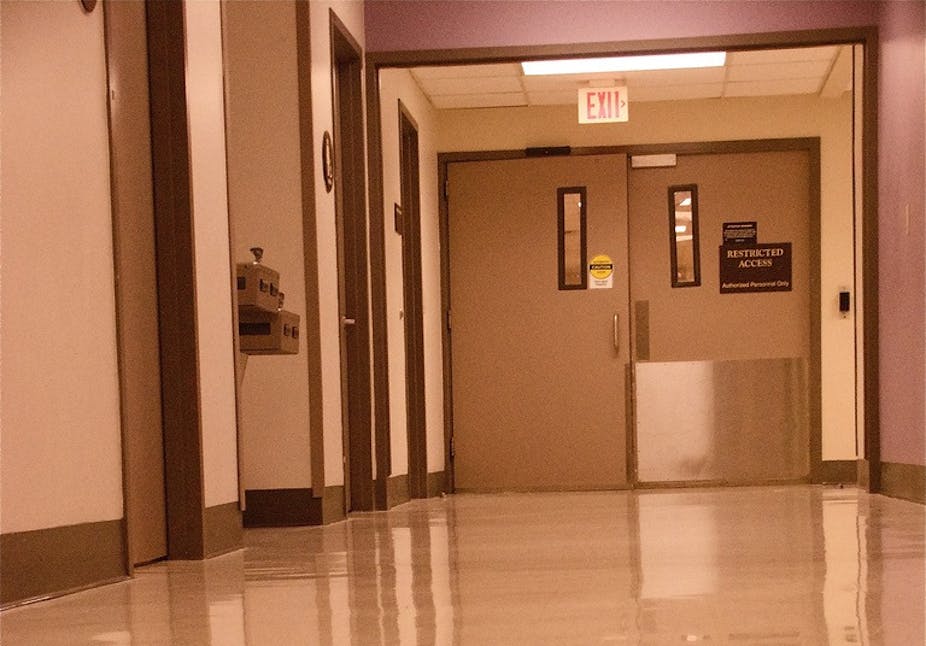As an intensive care physician I’m increasingly confronted with managing patients who are at the end of their life. Australians need to be aware that the way that they will spend the last few days or weeks of their lives is largely predetermined, not by their own wishes but by a medical conveyor belt from the community into acute hospitals and from there into intensive care units.
There’s no conspiracy behind this, it has just happened this way. The drivers include unreal societal expectations of what modern medicine can and, more importantly, cannot offer, fed by daily reports of the latest miracle cures; a medical profession that’s uncomfortable with discussing dying and death; medical specialisation that has resulted in amazing advances but focuses on specific single-organ problems and not the patient’s overall health status; and a lack of doctors who can stand back and recognise patients who are at the end of their lives. All this is reinforced by a society reluctant to openly discuss issues around ageing and dying. The perfect storm.
Interestingly, nobody wants it this way. Almost 70% of Australians want to die in their own homes. Yet, almost 70% will die in acute care hospitals.
People who suddenly become ill in their homes or in the community usually have an ambulance called. They are now on the conveyor belt. Ambulance personnel have no discretionary power – they have to take the patient to an acute hospital for further assessment.
Acute illness or trauma is frightening and most of us have little knowledge of what is available in the acute hospital. So, the journey starts – and for many, it’s appropriate. Medicine can perform some miracles. But for others, the so-called illness state is a normal and expected part of the dying process. Differentiating can be difficult.
The major challenge is to identify a potentially reversible component of a disease. Something that medicine can recognise and reverse – a patient who has fallen and fractured his hip can have it repaired, for instance.
But for many older people, there’s often little that’s amenable to modern medicine. As people age, they collect chronic health conditions or co-morbidities – this is the medicalisation of the ageing process. These conditions can sometimes be controlled but they’re not usually reversible.

Organ function declines markedly with age. Muscles become weaker, bones become more brittle, vital organ function deteriorates, brain function diminishes and wrinkles appear. The rate at which this occurs is encoded at conception and is called apoptosis – the programed death of cells and tissues.
You can optimise your chances of reaching your apoptotic potential with the help of living healthily and modern medicine. Diabetes can be controlled, for instance, and coronary arteries unblocked. Nevertheless, ageing is unavoidable and dying inevitable. Eventually the combination of chronic conditions means that even a small acute problem such as a simple urinary tract infection can result in death. This presents the dilemma for medicine and patients – how far do we go to sustain life?
Doctors are programed to cure. In an age of medical specialisation, they concentrate on incremental improvements in care of their own organ and refer to colleagues for advice about the other problems. As a result, elderly patients are often taking many medications with little or no benefit in the context of their chronic health status.
Clinical trials showing the efficacy of medicines are conducted in selected patients, not 90-year-olds with many chronic health problems. And when the end is finally near, those at the end of their lives come to hospitals for their last few days or weeks. Many are placed on life support machines and can no longer relate to their relatives and friends. Those who are conscious often plead to be allowed to die.
As an intensive care specialist I often become frustrated with my colleagues’ failure to recognise when patients are at the end of life. One of the worst phone calls an intensivist can receive from a colleague goes something like this, “I’ve had a chat to the relatives and they say they want everything done, can you help?”
This puts people like me in a difficult position. First, there’s an inference that what we can do will make the patient better. Then there’s the difficult situation of having to explain for the first time that we believe the patient is at the end of her life and any further active management would be futile.
The speciality of intensive care has a special responsibility to begin a frank and open discussion with our society about the limitations of modern medicine and the inevitability of ageing and dying. Hopefully, this will help people think about how they want to end their life.
Vital Signs: Stories from Intensive Care is published by NewSouth Publishing.
Read articles on related topics from our series Talking about death and dying

